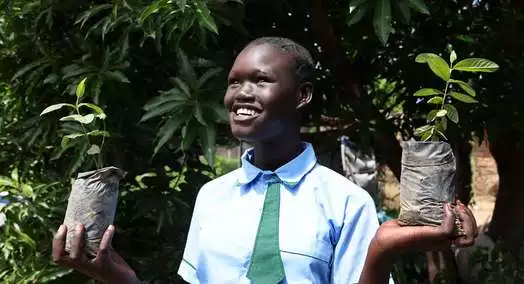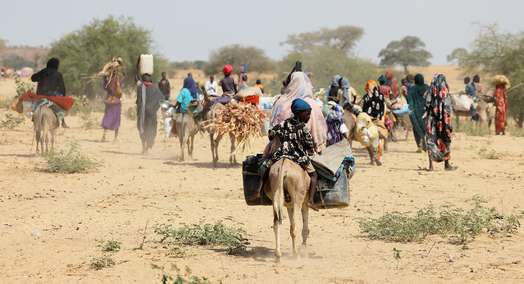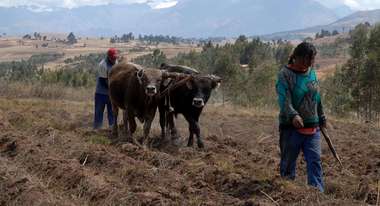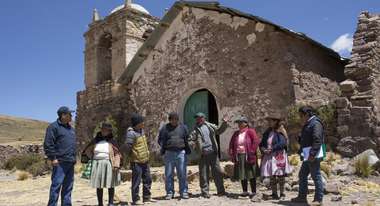Peru successfully advanced its economy. However, indigenous communities and poor, rural families are are not benefiting from it.
Travelling in the "global capital of biodiversity"
The capital of biodiversity is threatened by deforestation and climate change. On the way to a new project to support the indigenous population in the Amazon.

Our Welthungerhilfe office for Peru and Bolivia is embarking on a new and exciting journey. We are in the process of elaborating a new project that connects our rich and long experience in working on the Right to Territory, Land and Food with the very pressing issue of climate change mitigation and adaptation. And what region could be more illustrative, but also more urgent, than the Peruvian and Bolivian Amazon? Bolivia has the third highest rate of deforestation in the world, only after the Democratic Republic of Congo and Brazil. Peru ranks 6th, with deforestation responsible for 20 per cent of gas emissions.
As part of this new journey, I had the opportunity to travel to the Peruvian Amazon region called Madre de Dios, Spanish for 'God's mother'. Although the origin of the name is probably linked to some Catholic anecdote, it makes me think of God as in the Mother of Nature. Or la Pachamama as it is also known here in Peru.
The Capital of Biodiversity is Endangered
Madre de Dios is also known as the global capital of biodiversity, and is home to 575 varieties of birds and 1,200 butterflies. It is also home to seven indigenous peoples, including communities who have just recently been contacted or are living in voluntary isolation. Considered as the guardians of biodiversity, the indigenous communities rely heavily on forests for their livelihoods. The struggle to maintain a balance between the forces of humans and nature is however not easy, because Madre de Dios is also a region plagued by the invasion of settlers engaged in various illegal extractive economies (in particular gold mining).
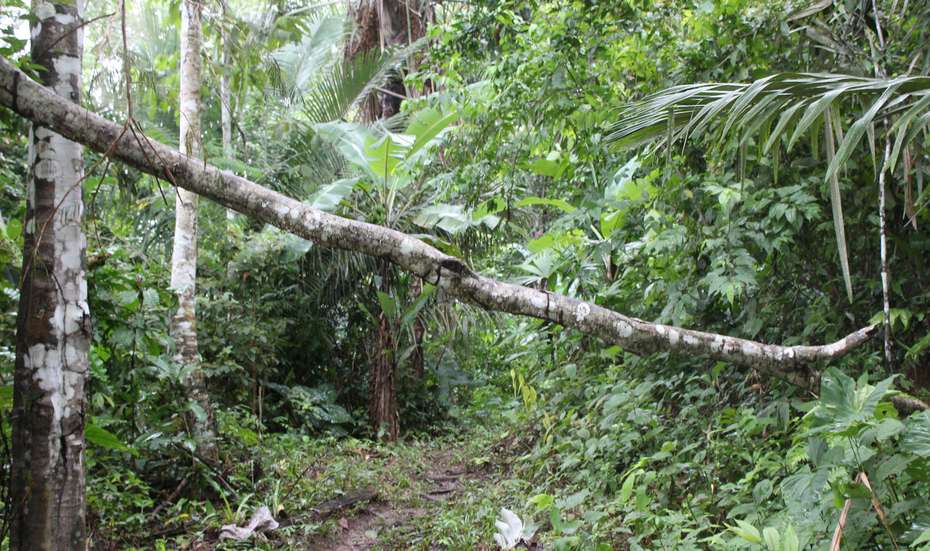
In 11 of the 35 indigenous communities in Madre de Dios, mining is now a reality. In Peru, it is estimated that between 2001 and 2020 a total of 2,636,585 hectares of forest were lost. In 2020 the highest deforestation rate of the last twenty years was recorded, more than 200,000 hectares, showing that the pressure on our Amazon forests under COVID-19 has only increased. The deforestation does not only affect the biodiversity and has an impact on climate change. It also affects the livelihoods and food security of the local indigenous communities.
The chestnuts never end. They are our bank.
Indigenous leader in PeruThere is ample evidence that the main strategy to halt these processes is to protect indigenous territories, due to their more sustainable management of ecosystems and lower population density. At present, indigenous territories are, however, threatened by the lack of state policies and land use planning, by the violence of actors linked to illegal economies, and by the precarious situation of the indigenous economy and food systems. The struggles of the indigenous peoples to defend their land has also become more dangerous. According to the organization Global Witness, Peru saw at least six killings of environmental defenders in 2020, most of them in the Amazon region.
The True Gold of the Region: Chestnuts
During my intense four-day trip I had the chance to meet inspiring leaders of the indigenous federation, FENAMAD. I listened to the human rights ombudsman expressing his despair regarding the increased corruption and violence due to the gold mining and the absence of state support and institutionality. I travelled down the river to witness the breathtaking biodiversity but also how the informal and illegal mining is eating its way through the rainforest. I spoke to the elderly community members recalling how once they had been self-sufficient and now they were struggling to provide an adequate and healthy diet to their children and grandchildren. I visited community based projects designed to contribute to repairing the damage to the social coherence and collective identity and promote economic alternatives to the extractivist activities dominating the region.

And there are alternatives: Agroforestry, integral or ecological community gardens, but especially the Amazon nut or chestnut (known incorrectly in Europe as Brazil nut). In Peru, this tree, which can reach an age of 1000 years, grows only in the Madre de Dios region. It takes about 40 years for the trees to bear fruit, which is why the nuts are truly "the slow food" of the Amazon. As a result, the Amazonian nut production has been recognized as a crucial strategy to fight the rapid deforestation in the region. With the chestnut collectors, mainly from indigenous communities, have taken on the role of guardians of the forest. The chestnut activity is not only an important safeguard against deforestation, it also provides for one of the main sources of incomes for the local population in Madre de Dios. During my visit, I had the opportunity to visit the nut plant of the Indigenous Forest Association of Madre de Dios (AFIMAD), which works in eight native communities and belongs to five different ethnic groups. AFIMAD estimates that the economic incomes of their chestnut collecting benefits between 15,000 and 25,000 people, which represents 25 per cent of the region's population. It is therefore "the true gold of the region" and as one of the indigenous leaders interviewed said: "The chestnuts never end. They are our bank".
Working at the Political and Civil Society Level
These models are inspiring and important to support. For this reason, Welthungerhilfe also plans to support the institutional strengthening of the indigenous federation and their community-based member organizations. In doing so, we also focus on strengthening women and youth leaders. The aim is to implement policies at the regional and national levels that protect local communities' rights to land and food. Another focus is on developing shared visions, plans and strategies between the communities and organizations of the two neighboring regions in Peru and Bolivia. Firstly, to achieve greater visibility of the impacts in the region, but more importantly, to highlight the alternatives that exist. Alternatives that allow communities to continue with plans like the Amazon Nut. Initiatives that not only contribute to climate change adaptation and mitigation, but also provide adequate and sustainable livelihoods that can ensure food security for their communities and many future generations.

